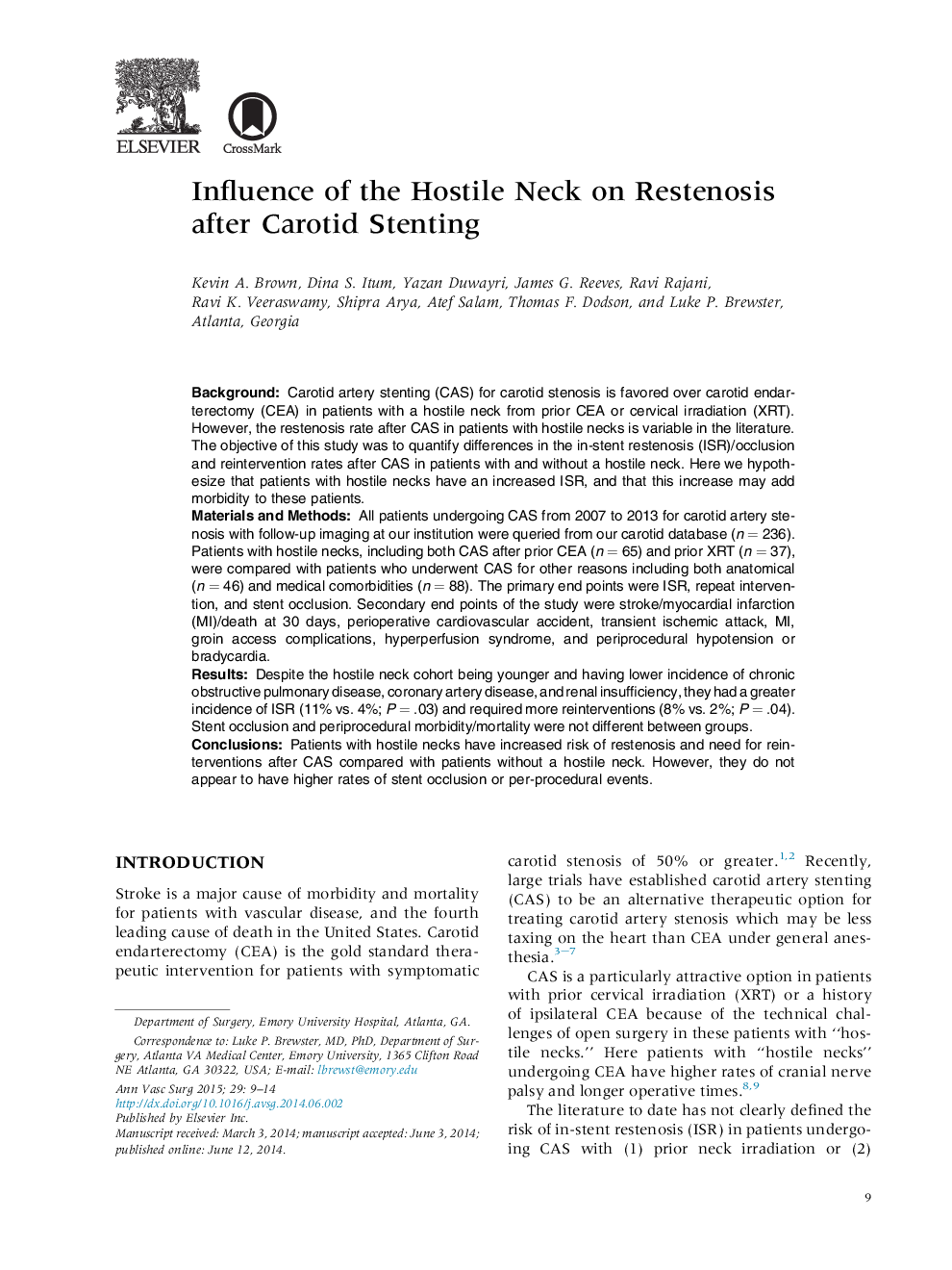| کد مقاله | کد نشریه | سال انتشار | مقاله انگلیسی | نسخه تمام متن |
|---|---|---|---|---|
| 2886409 | 1574206 | 2015 | 6 صفحه PDF | دانلود رایگان |
BackgroundCarotid artery stenting (CAS) for carotid stenosis is favored over carotid endarterectomy (CEA) in patients with a hostile neck from prior CEA or cervical irradiation (XRT). However, the restenosis rate after CAS in patients with hostile necks is variable in the literature. The objective of this study was to quantify differences in the in-stent restenosis (ISR)/occlusion and reintervention rates after CAS in patients with and without a hostile neck. Here we hypothesize that patients with hostile necks have an increased ISR, and that this increase may add morbidity to these patients.Materials and MethodsAll patients undergoing CAS from 2007 to 2013 for carotid artery stenosis with follow-up imaging at our institution were queried from our carotid database (n = 236). Patients with hostile necks, including both CAS after prior CEA (n = 65) and prior XRT (n = 37), were compared with patients who underwent CAS for other reasons including both anatomical (n = 46) and medical comorbidities (n = 88). The primary end points were ISR, repeat intervention, and stent occlusion. Secondary end points of the study were stroke/myocardial infarction (MI)/death at 30 days, perioperative cardiovascular accident, transient ischemic attack, MI, groin access complications, hyperperfusion syndrome, and periprocedural hypotension or bradycardia.ResultsDespite the hostile neck cohort being younger and having lower incidence of chronic obstructive pulmonary disease, coronary artery disease, and renal insufficiency, they had a greater incidence of ISR (11% vs. 4%; P = .03) and required more reinterventions (8% vs. 2%; P = .04). Stent occlusion and periprocedural morbidity/mortality were not different between groups.ConclusionsPatients with hostile necks have increased risk of restenosis and need for reinterventions after CAS compared with patients without a hostile neck. However, they do not appear to have higher rates of stent occlusion or per-procedural events.
Journal: Annals of Vascular Surgery - Volume 29, Issue 1, January 2015, Pages 9–14
